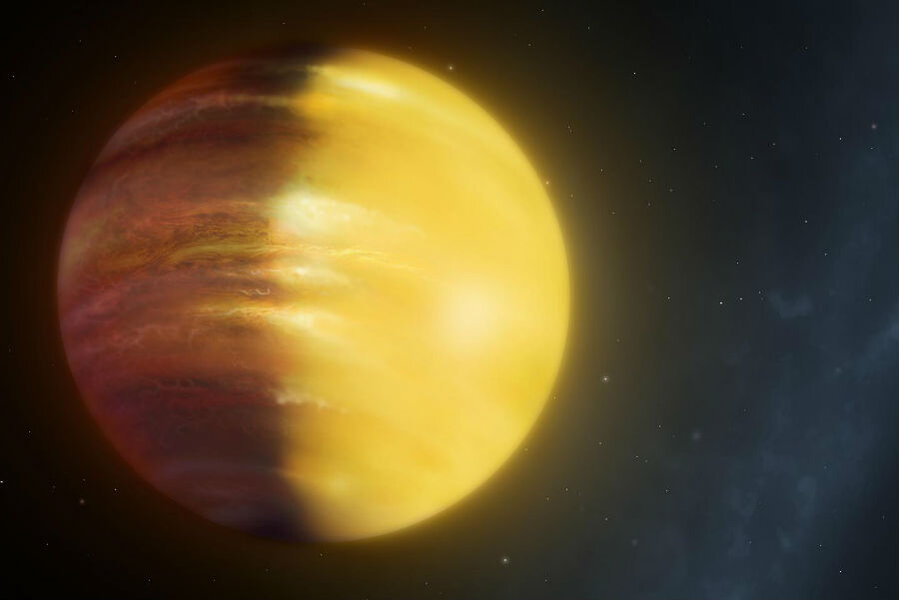Astronomers discover alien planet with clouds made of jewels
Loading...
For the first time ever, scientists have observed weather patterns on a gas giant outside of our solar system, a team of British researchers announced Monday.
Researchers at the University of Warwick observed cloud formation and weather patterns on the massive exoplanet HAT-P-7b from 1,040 light-years away, thanks to data from NASA's planet-hunting Kepler space telescope. And what they found startled them.
Scientists knew from previous studies that HAT-P-7b, which is 40 percent larger than Jupiter and 500 times more massive than the Earth, moves in a tight orbit around its star, completing a full revolution in just 2.2 days. Because of that proximity, the exoplanet is tidally locked, with one side of the permanently facing the star, much like Earth's moon is tidally locked to Earth.
The researchers had assumed that extreme temperatures and constant daylight on the side constantly baking in the light of its star, which is twice the size of our sun, would prevent cloud formation, explained David Armstrong, lead author of the study, in a press release.
"We expect clouds to form on the cold night side of the planet, but they would evaporate quickly on the hot dayside," said Dr. Armstrong.
Instead, they determined that clouds existed on both sides of the planet, suggesting complex wind and weather patterns. What's more, the researchers speculate that the clouds forming on HAT-P-7b might be made of the same material that comprises rubies and sapphires, according to the paper, published Monday in the journal Nature Astronomy. The unusual atmospheric phenomenon is a historic first in the field of exoplanetary studies.
As they looked through the data gathered by Kepler between between 2009 and 2013, they discovered that the brightest spot on the exoplanet's surface kept shifting positions, indicating that clouds were moving across its atmosphere.
"These results show that strong winds circle the planet, transporting clouds from the night side to the dayside," Armstrong said in the statement. "The winds change speed dramatically, leading to huge cloud formations building up, then dying away."
While these clouds might provide some shade, HAT-P-7b would not make for a fun-in-the-sun extraplanetary vacation destination. The researchers calculated that the hot side of the planet averages a balmy (and completely uninhabitable) 2,860 degrees Kelvin (4,688 degrees F).
Clouds of ordinary water vapor could never exist in those temperatures. One mineral that could survive the extreme conditions is corundum, which in its crystalline form is known better as sapphires and rubies.
"It's a very good possibility that these clouds are made of corundum, and we're seeing essentially big condensed clouds of minerals being blown across the planet," Armstrong told Quartz.
As planet detection and imaging improves, scientists expect to observe more weather patterns like these in the future. NASA's James Webb Space Telescope, set to launch in 2018, is in many ways a new and improved version of the Kepler satellite that the University of Warwick researchers used to study this exoplanet. The new telescope is designed to imaging exoplanets directly, leading to a more detailed knowledge of planetary formation in distant parts of the galaxy.








